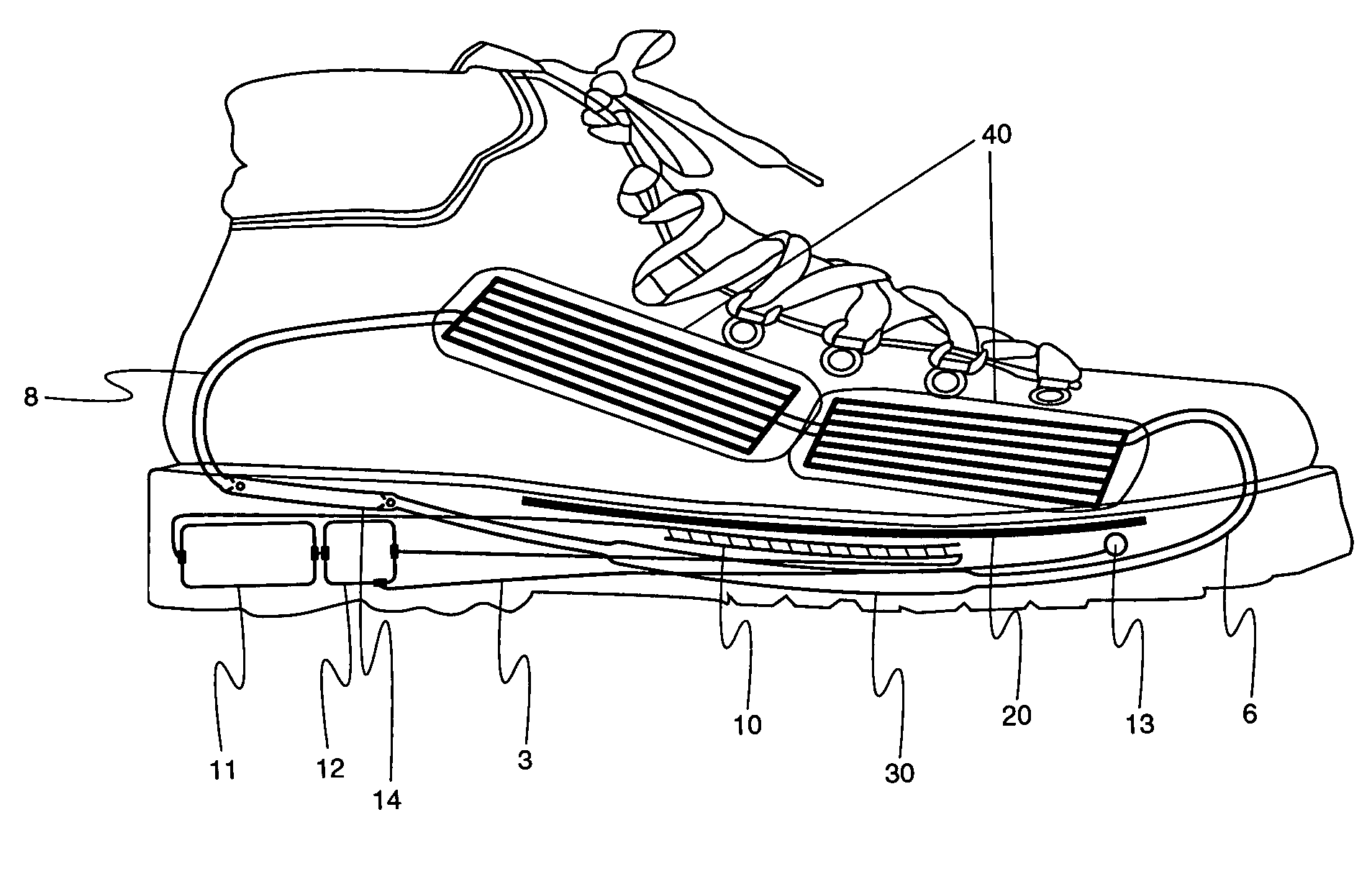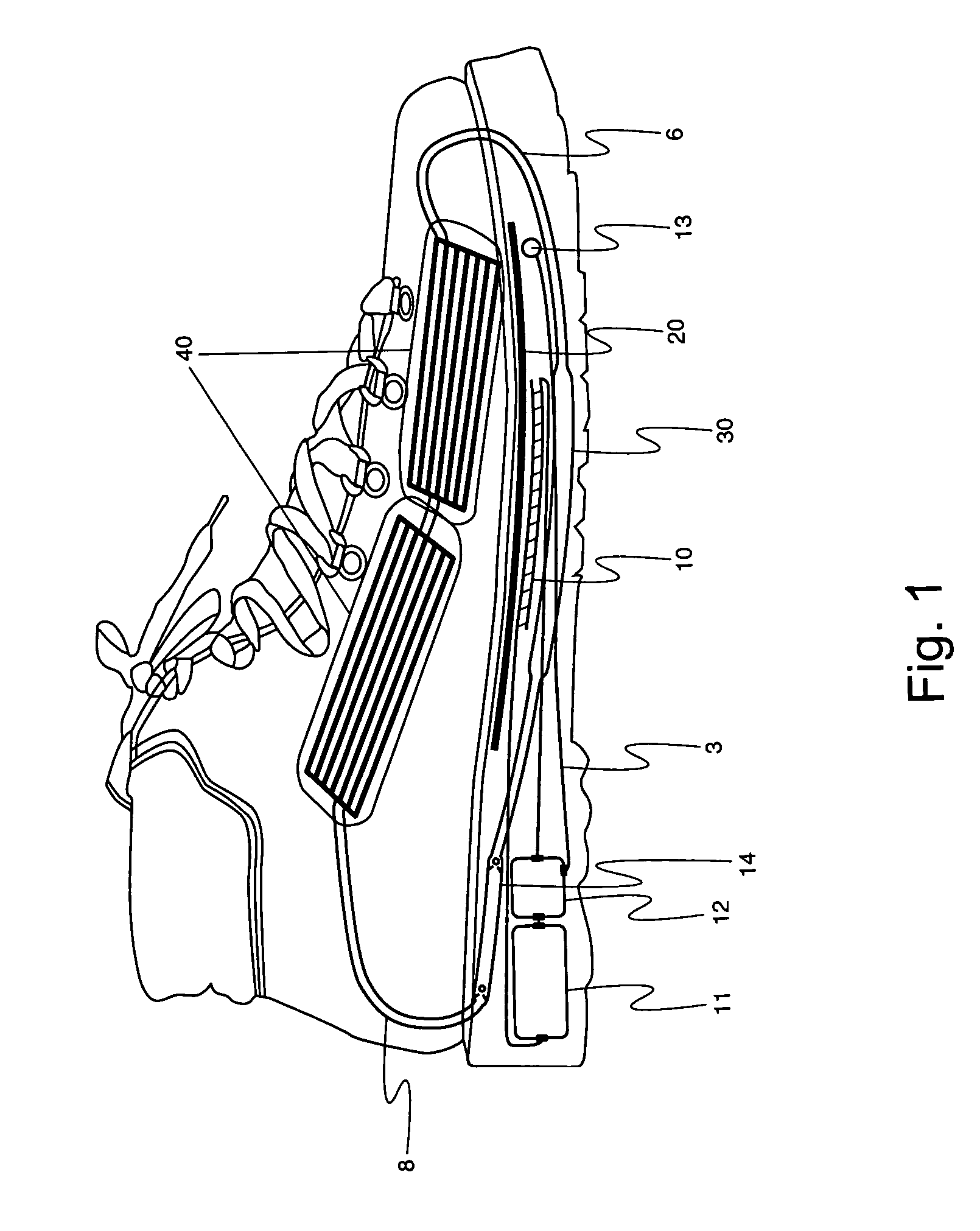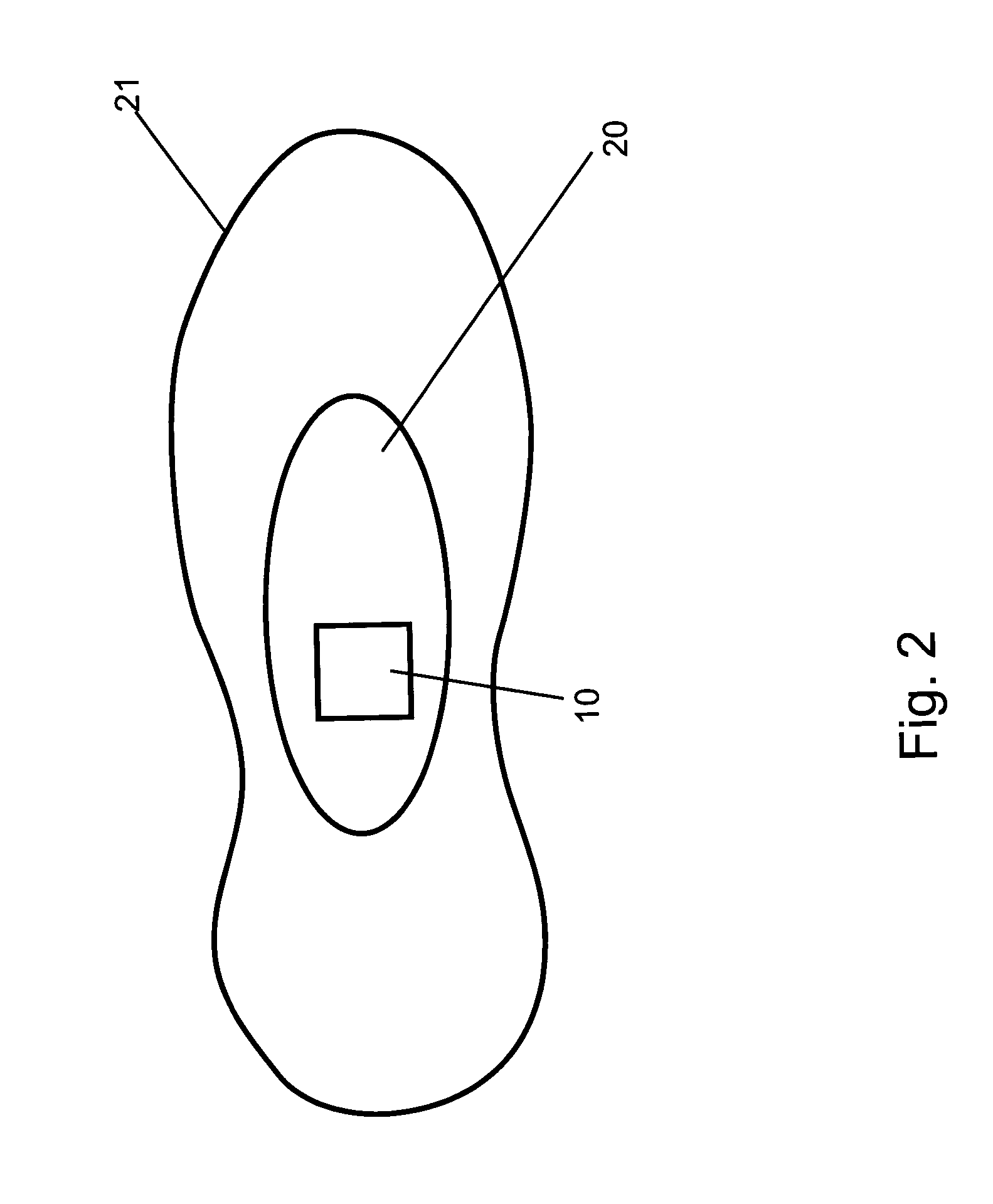Temperature regulated clothing
a technology of temperature regulation and clothing, applied in the direction of garments, heater elements, heating types, etc., can solve the problems of excessive bulky and heavy clothing, clothing uncomfortable for users, and increased cost of insulation
- Summary
- Abstract
- Description
- Claims
- Application Information
AI Technical Summary
Benefits of technology
Problems solved by technology
Method used
Image
Examples
example 1
Methods of Cooling
[0075]A TEM is incorporated into, e.g., the sole of a shoe and direct current voltage is applied across the TEM from a battery mounted in the heal. The polarity of the voltage is selected so that the cold TEM side faces inside the shoe. A user puts on the shoe. Heat is transferred from the user's foot to the sole of the shoe where is can be conducted into the external environment.
[0076]The efficiency of cooling is increased by bonding a heat conducting plate, e.g., on the inside of the TEM. The heat conducting plate can have a larger surface area than the TEM to collect (or disperse) heat over a wide area within the shoe. The heat conducting plate is made of an aluminum sheet to rapidly conduct heat to the TEM.
[0077]The efficiency of cooling can be increased by installing one or more circulating coolant loops into the shoe. An internal heat exchanger is mounted under the TEM to absorb heat transferred from the foot. A circulation pump is mounted in the heal of the ...
example 2
Methods of Warming
[0079]A TEM is incorporated into the, e.g., palm of a mitten and a DC voltage is applied across the TEM from a battery mounted on the cuff. The polarity of the voltage is selected so that the warm TEM side faces inside the mitten. A user puts on the mitten. Resistive heat is generated within the TEM and transferred to the hand. Ambient heat from the surrounding air is also transferred to the user's hand by the TEM.
[0080]The efficiency of warming is increased by bonding heat conducting plate 20 inside of the TEM, as shown in FIG. 8. The heat conducting plate has a larger surface area than the TEM to distribute heat over a wider area within the mitten. The heat conducting plate is made of a fine flexible stainless steel mesh to rapidly conduct heat from the TEM.
[0081]The efficiency of warming is increased by installing a circulating coolant loop into the mitten. External heat exchanger 40 is mounted on the back exterior of the mitten to absorb heat from the ambient a...
example 3
Temperature Regulated Clothing with Dual Heat Exchange Circulations
[0083]The presence of circulating coolant loops on each side of the TEM in temperature regulated clothing can, e.g., enhance the efficiency of TEM operation, and allow heat transfer to broader or more remote locations of the clothing. The circulation of coolant fluid within two or more coolant loops can be driven by one or more circulation pumps.
[0084]A dual circulating loop heat exchange system for temperature regulated clothing is shown in FIG. 9. Such systems can operate essentially as in previous examples, but with a second circulating loop replacing the heat conductor plate. The dual circulating loop system includes, e.g., TEM 90 in contact on one side with external heat exchange circulating coolant loop 91, and in contact on the other side with internal heat exchange circulating coolant loop 92.
[0085]Circulation pump 93 is a dual action pump providing circulation in both coolant loops. Piston plate 94 is slidab...
PUM
 Login to View More
Login to View More Abstract
Description
Claims
Application Information
 Login to View More
Login to View More - R&D
- Intellectual Property
- Life Sciences
- Materials
- Tech Scout
- Unparalleled Data Quality
- Higher Quality Content
- 60% Fewer Hallucinations
Browse by: Latest US Patents, China's latest patents, Technical Efficacy Thesaurus, Application Domain, Technology Topic, Popular Technical Reports.
© 2025 PatSnap. All rights reserved.Legal|Privacy policy|Modern Slavery Act Transparency Statement|Sitemap|About US| Contact US: help@patsnap.com



